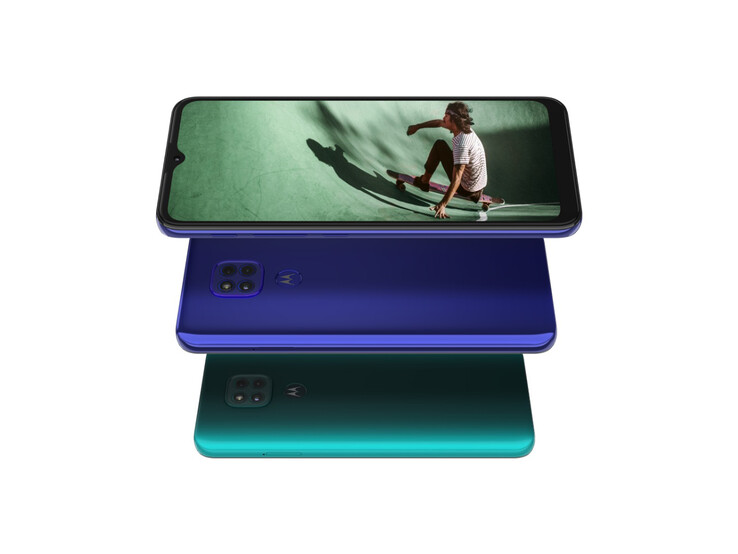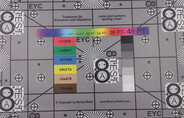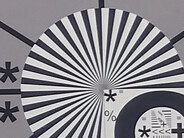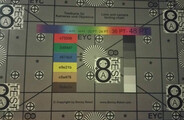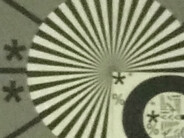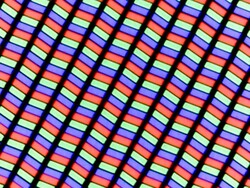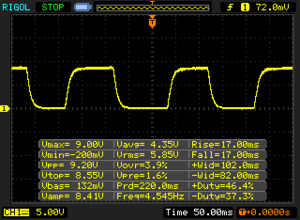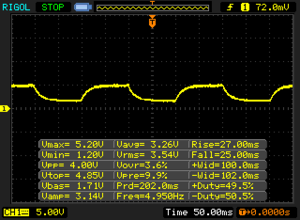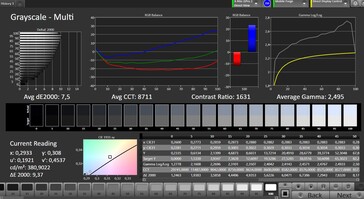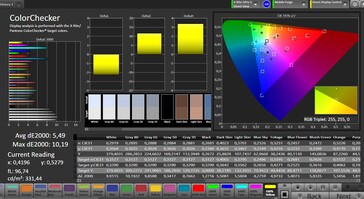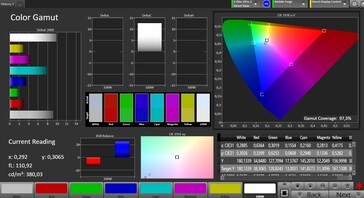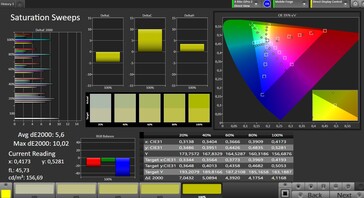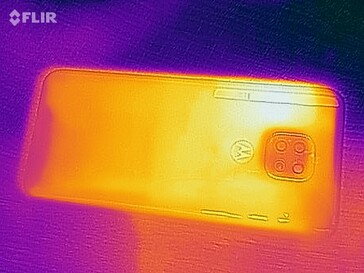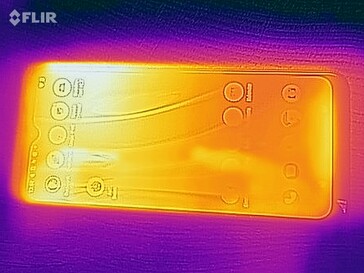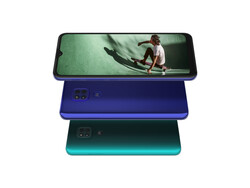Motorola Moto G9 Play Smartphone Review - Affordable Performance
Comparison devices
Bewertung | Rating Version | Datum | Modell | Gewicht | Laufwerk | Groesse | Aufloesung | Preis ab |
|---|---|---|---|---|---|---|---|---|
| 77.9 % v7 (old) | v7 (old) | 10 / 2020 | Motorola Moto G9 Play SD 662, Adreno 610 | 200 g | 64 GB eMMC Flash | 6.50" | 1600x720 | |
| 79.9 % v7 (old) | v7 (old) | 09 / 2020 | Xiaomi Redmi Note 9 Helio G85, Mali-G52 MP2 | 199 g | 64 GB eMMC Flash | 6.53" | 2340x1080 | |
| 76.4 % v7 (old) | v7 (old) | 08 / 2020 | Samsung Galaxy A21s Exynos 850, Mali-G52 MP1 | 192 g | 32 GB eMMC Flash | 6.50" | 1600x720 | |
| 75.1 % v7 (old) | v7 (old) | 10 / 2020 | Sony Xperia L4 Helio P22 MT6762, PowerVR GE8320 | 178 g | 64 GB eMMC Flash | 6.20" | 1680x720 | |
| 74.9 % v7 (old) | v7 (old) | 10 / 2020 | Motorola Moto G8 Power Lite Helio P35 MT6765, PowerVR GE8320 | 200 g | 64 GB eMMC Flash | 6.50" | 1600x720 |
Case, equipment and operation - Upgrade in communication
In the 8th generation of the Motorola G, there was an apparently new naming scheme with the Moto G8 Power and the Moto G8 Power Lite, but Motorola probably only wanted to point out the new, significantly higher capacity battery, which is now standard even in this price range. So the manufacturer was able to return to the traditional naming scheme and the cheapest middle class device of the 9th generation is again called Motorola Moto G9 Play.
The chic color gradients of its predecessor are no longer available, but now a shiny plastic housing in blue or green, which is very susceptible to fingerprints. The plastic housing is basically stable and cleanly processed, but can be slightly dented in the middle. The design is still water-repellent.
The case now has a USB-C port, Bluetooth 5.0, NFC and WiFi 5 with and is therefore much more modern than its predecessor. You can also tell by the WLAN speeds: Although these vary greatly, they are generally much higher than those of the Moto G8 Power Lite.
There is now a separate button for the Google Assistant, but we don't find the placement above the volume rocker ideal: Every now and then, instead of making it louder, we activated the Google Assistant. the fast and reliable fingerprint sensor on the back has remained.
| Networking | |
| iperf3 transmit AX12 | |
| Xiaomi Redmi Note 9 | |
| Samsung Galaxy A21s | |
| Motorola Moto G9 Play | |
| Sony Xperia L4 | |
| Motorola Moto G8 Power Lite | |
| iperf3 receive AX12 | |
| Xiaomi Redmi Note 9 | |
| Samsung Galaxy A21s | |
| Motorola Moto G9 Play | |
| Sony Xperia L4 | |
| Motorola Moto G8 Power Lite | |
Cameras - Blurred views
The main camera of the Moto G9 Play has a resolution of 48 megapixels, but by default 4 pixels are combined into one, so that more light is absorbed by each pixel. It is supported by a lens that collects depth information and a camera that takes macro shots. There is no wide-angle lens, and since the macro lens can only be used in a special mode, the camera system is not as versatile as some other smartphones in this price range.
Unfortunately, the pictures show a lot of blur, so they are rather of a lower quality than we are used to even from cheap smartphones, and the surrounding area looks quite dark. In very low light the camera still sees something, but the pictures are also quite blurred.
Videos can be recorded at a maximum of 1080p and 60 fps, individual areas are often out of focus and the autofocus has a hard time finding the right sharpness if the light is not quite optimal.
On the front side there is an 8 megapixel camera, it makes reasonably useful selfies, but here too you should not look in detail for sharpness.
Image comparison
Choose a scene and navigate within the first image. One click changes the position on touchscreens. One click on the zoomed-in image opens the original in a new window. The first image shows the scaled photograph of the test device.
Hauptobjektiv BlumeHauptobjektiv UmgebungHauptobjektiv Low Light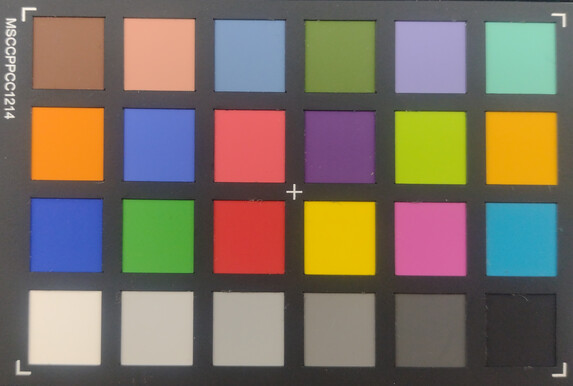
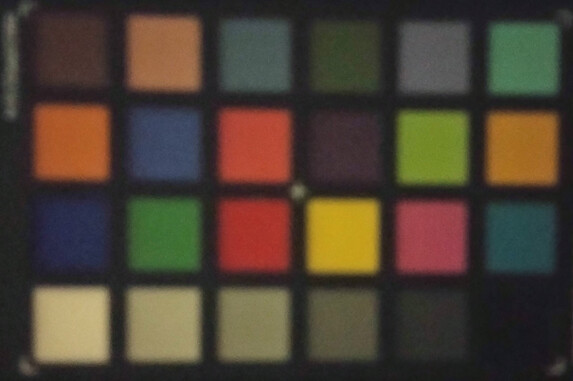
Display - Should be brighter
The Moto G9 Play's IPS screen doesn't get really bright, we measured a maximum of 460 cd/m². That's OK for the price range, but still much less than the Xiaomi Redmi Note 9, which also has a higher resolution than the Moto G9 Play, but the extended 720p resolution is sufficient to display pictures sharply. The black level is quite good though, resulting in a decent contrast and a reasonably colorful display.
The color accuracy is moderate and a clear blue cast is visible in the display. But there is no PWM, so even people who are sensitive to flickering can use the display.
| |||||||||||||||||||||||||
Brightness Distribution: 88 %
Center on Battery: 450 cd/m²
Contrast: 1957:1 (Black: 0.23 cd/m²)
ΔE ColorChecker Calman: 5.49 | ∀{0.5-29.43 Ø4.79}
ΔE Greyscale Calman: 7.5 | ∀{0.09-98 Ø5}
97.3% sRGB (Calman 2D)
Gamma: 2.495
CCT: 8711 K
| Motorola Moto G9 Play IPS, 1600x720, 6.5" | Xiaomi Redmi Note 9 IPS LCD, 2340x1080, 6.5" | Samsung Galaxy A21s PLS, 1600x720, 6.5" | Sony Xperia L4 IPS, 1680x720, 6.2" | Motorola Moto G8 Power Lite IPS, 1600x720, 6.5" | |
|---|---|---|---|---|---|
| Response Times | 25% | 22% | -6% | -15% | |
| Response Time Grey 50% / Grey 80% * (ms) | 52 ? | 38.8 ? 25% | 44 ? 15% | 58 ? -12% | 70.4 ? -35% |
| Response Time Black / White * (ms) | 34 ? | 25.6 ? 25% | 24 ? 29% | 34 ? -0% | 32.4 ? 5% |
| PWM Frequency (Hz) | 500 ? | 100 ? | |||
| Screen | 43% | -7% | -5% | -19% | |
| Brightness middle (cd/m²) | 450 | 553 23% | 540 20% | 429 -5% | 493 10% |
| Brightness (cd/m²) | 428 | 527 23% | 509 19% | 404 -6% | 462 8% |
| Brightness Distribution (%) | 88 | 89 1% | 91 3% | 92 5% | 91 3% |
| Black Level * (cd/m²) | 0.23 | 0.12 48% | 0.36 -57% | 0.26 -13% | 0.47 -104% |
| Contrast (:1) | 1957 | 4608 135% | 1500 -23% | 1650 -16% | 1049 -46% |
| Colorchecker dE 2000 * | 5.49 | 3.8 31% | 6.58 -20% | 6.14 -12% | 5.7 -4% |
| Colorchecker dE 2000 max. * | 10.19 | 8.7 15% | 11.55 -13% | 10.51 -3% | 12.8 -26% |
| Greyscale dE 2000 * | 7.5 | 2.2 71% | 6.4 15% | 6.6 12% | 6.8 9% |
| Gamma | 2.495 88% | 2.3 96% | 2.206 100% | 2.23 99% | 2.31 95% |
| CCT | 8711 75% | 6727 97% | 8482 77% | 8346 78% | 7596 86% |
| Total Average (Program / Settings) | 34% /
40% | 8% /
-1% | -6% /
-5% | -17% /
-18% |
* ... smaller is better
Display Response Times
| ↔ Response Time Black to White | ||
|---|---|---|
| 34 ms ... rise ↗ and fall ↘ combined | ↗ 17 ms rise | |
| ↘ 17 ms fall | ||
| The screen shows slow response rates in our tests and will be unsatisfactory for gamers. In comparison, all tested devices range from 0.1 (minimum) to 240 (maximum) ms. » 90 % of all devices are better. This means that the measured response time is worse than the average of all tested devices (20.3 ms). | ||
| ↔ Response Time 50% Grey to 80% Grey | ||
| 52 ms ... rise ↗ and fall ↘ combined | ↗ 27 ms rise | |
| ↘ 25 ms fall | ||
| The screen shows slow response rates in our tests and will be unsatisfactory for gamers. In comparison, all tested devices range from 0.165 (minimum) to 636 (maximum) ms. » 88 % of all devices are better. This means that the measured response time is worse than the average of all tested devices (31.7 ms). | ||
Screen Flickering / PWM (Pulse-Width Modulation)
| Screen flickering / PWM not detected | |||
In comparison: 53 % of all tested devices do not use PWM to dim the display. If PWM was detected, an average of 8156 (minimum: 5 - maximum: 343500) Hz was measured. | |||
Performance, emissions and battery life - Ordinary speaker
The new Qualcomm Snapdragon 662 is used in Moto G9 Play and at the time of testing it shows quite a high performance for its price range. Our test device is slightly behind the Redmi Note 9, but otherwise it can beat all comparable devices and also offers a significant increased performance compared to its predecessor.
In everyday life you can move very smoothly through the system, only more complex apps cause delays, for example in volume control. Our reference microSD, the Toshiba Exceria Pro M501, is read very quickly. The internal memory is also on a good level for its price class in terms of reading and writing speed.
The maximum temperatures are completely harmless, they stay below 40°C even after a longer load, so there should be no problems even on hotter days.
A small monospeaker is installed as loudspeaker, which radiates the sound at the lower edge. It is loud and sounds quite pleasant, even at maximum volume. Voices are clearly reproduced and music does not throb. Audio devices can be connected via Bluetooth or analog jack, both work without problems and deliver clean sound.
The battery has a capacity of 5,000 mAh, which is as high as that of many comparable devices in 2020: 5,000 mAh seems to be a new standard capacity. The Moto G9 Play, however, achieves significantly longer runtimes than the G8 Power Lite, which had just as much capacity: The smartphone lasted over 16 hours in our WLAN test. That's enough for two working days of uninterrupted WLAN surfing with the smartphone. If you switch off your cell phone from time to time, you can easily manage 3 or even 4 working days. The smartphone can be charged with a maximum of 15 watts, even if a 20-watt power supply unit is included. A full charge takes a little more than 2 hours.
| PCMark for Android | |
| Work performance score (sort by value) | |
| Motorola Moto G9 Play | |
| Xiaomi Redmi Note 9 | |
| Samsung Galaxy A21s | |
| Sony Xperia L4 | |
| Average Qualcomm Snapdragon 662 (7247 - 8714, n=8) | |
| Work 2.0 performance score (sort by value) | |
| Motorola Moto G9 Play | |
| Xiaomi Redmi Note 9 | |
| Samsung Galaxy A21s | |
| Sony Xperia L4 | |
| Motorola Moto G8 Power Lite | |
| Average Qualcomm Snapdragon 662 (5866 - 7184, n=9) | |
| GFXBench | |
| on screen Aztec Ruins Normal Tier Onscreen (sort by value) | |
| Motorola Moto G9 Play | |
| Samsung Galaxy A21s | |
| Sony Xperia L4 | |
| Motorola Moto G8 Power Lite | |
| Average Qualcomm Snapdragon 662 (4.8 - 15, n=13) | |
| Average of class Smartphone (6.2 - 166, n=207, last 2 years) | |
| 1920x1080 Aztec Ruins Normal Tier Offscreen (sort by value) | |
| Motorola Moto G9 Play | |
| Samsung Galaxy A21s | |
| Sony Xperia L4 | |
| Motorola Moto G8 Power Lite | |
| Average Qualcomm Snapdragon 662 (7.4 - 8.6, n=13) | |
| Average of class Smartphone (3.4 - 332, n=207, last 2 years) | |
| on screen Aztec Ruins High Tier Onscreen (sort by value) | |
| Motorola Moto G9 Play | |
| Samsung Galaxy A21s | |
| Sony Xperia L4 | |
| Motorola Moto G8 Power Lite | |
| Average Qualcomm Snapdragon 662 (2.9 - 9.6, n=13) | |
| Average of class Smartphone (0.85 - 144, n=208, last 2 years) | |
| 2560x1440 Aztec Ruins High Tier Offscreen (sort by value) | |
| Motorola Moto G9 Play | |
| Samsung Galaxy A21s | |
| Sony Xperia L4 | |
| Motorola Moto G8 Power Lite | |
| Average Qualcomm Snapdragon 662 (2.5 - 2.9, n=13) | |
| Average of class Smartphone (1.2 - 129, n=207, last 2 years) | |
| Motorola Moto G9 Play | Xiaomi Redmi Note 9 | Samsung Galaxy A21s | Sony Xperia L4 | Motorola Moto G8 Power Lite | Average 64 GB eMMC Flash | Average of class Smartphone | |
|---|---|---|---|---|---|---|---|
| AndroBench 3-5 | 8% | -13% | -23% | -18% | -23% | 483% | |
| Sequential Read 256KB (MB/s) | 315.2 | 306.6 -3% | 307 -3% | 293.4 -7% | 284 -10% | 277 ? -12% | 2212 ? 602% |
| Sequential Write 256KB (MB/s) | 187.2 | 248.1 33% | 104.3 -44% | 165 -12% | 226.5 21% | 178.4 ? -5% | 1835 ? 880% |
| Random Read 4KB (MB/s) | 98.4 | 65.1 -34% | 77.2 -22% | 61.2 -38% | 59.9 -39% | 60.7 ? -38% | 293 ? 198% |
| Random Write 4KB (MB/s) | 96.1 | 146.9 53% | 89.5 -7% | 22.5 -77% | 24.17 -75% | 33.8 ? -65% | 338 ? 252% |
| Sequential Read 256KB SDCard (MB/s) | 85.4 ? | 84.4 ? -1% | 80 ? -6% | 83.5 ? -2% | 83.4 ? -2% | 77.4 ? -9% | |
| Sequential Write 256KB SDCard (MB/s) | 65.3 ? | 63.5 ? -3% | 66.4 ? 2% | 62.5 ? -4% | 63.8 ? -2% | 58.3 ? -11% |
Temperature
(+) The maximum temperature on the upper side is 39.5 °C / 103 F, compared to the average of 35.2 °C / 95 F, ranging from 21.9 to 247 °C for the class Smartphone.
(+) The bottom heats up to a maximum of 39 °C / 102 F, compared to the average of 34 °C / 93 F
(+) In idle usage, the average temperature for the upper side is 26.1 °C / 79 F, compared to the device average of 32.9 °C / 91 F.
Speakers
Motorola Moto G9 Play audio analysis
(+) | speakers can play relatively loud (82.5 dB)
Bass 100 - 315 Hz
(-) | nearly no bass - on average 67.5% lower than median
(+) | bass is linear (0% delta to prev. frequency)
Mids 400 - 2000 Hz
(-) | nearly no mids - on average 67.5% lower than median
(+) | mids are linear (0% delta to prev. frequency)
Highs 2 - 16 kHz
(-) | nearly no highs - on average 67.5% lower than median
(+) | highs are linear (0% delta to prev. frequency)
Overall 100 - 16.000 Hz
(-) | overall sound is not linear (130.9% difference to median)
Compared to same class
» 99% of all tested devices in this class were better, 1% similar, 0% worse
» The best had a delta of 11%, average was 35%, worst was 134%
Compared to all devices tested
» 100% of all tested devices were better, 0% similar, 0% worse
» The best had a delta of 4%, average was 24%, worst was 134%
Samsung Galaxy A21s audio analysis
(±) | speaker loudness is average but good (79.5 dB)
Bass 100 - 315 Hz
(-) | nearly no bass - on average 62.2% lower than median
(+) | bass is linear (0% delta to prev. frequency)
Mids 400 - 2000 Hz
(-) | nearly no mids - on average 62.2% lower than median
(+) | mids are linear (0% delta to prev. frequency)
Highs 2 - 16 kHz
(-) | nearly no highs - on average 62.2% lower than median
(+) | highs are linear (0% delta to prev. frequency)
Overall 100 - 16.000 Hz
(-) | overall sound is not linear (128.9% difference to median)
Compared to same class
» 98% of all tested devices in this class were better, 2% similar, 0% worse
» The best had a delta of 11%, average was 35%, worst was 134%
Compared to all devices tested
» 99% of all tested devices were better, 1% similar, 0% worse
» The best had a delta of 4%, average was 24%, worst was 134%
Battery life
| Motorola Moto G9 Play 5000 mAh | Xiaomi Redmi Note 9 5020 mAh | Samsung Galaxy A21s 5000 mAh | Sony Xperia L4 3580 mAh | Motorola Moto G8 Power Lite 5000 mAh | Average of class Smartphone | |
|---|---|---|---|---|---|---|
| Battery Runtime | ||||||
| WiFi Websurfing (h) | 16 | 14.5 -9% | 15.7 -2% | 13.1 -18% | 13.9 -13% | 18.8 ? 18% |
Pros
Cons
Verdict - High performance and long running time
With the Moto G9 Play, Motorola delivers a low-cost smartphone with long battery life. Compared to the Moto G8 Power Lite it is a significant update, both in terms of communication modules and performance. Therefore it is worth paying the extra charge for the newer device.
In most areas the Moto G9 Play is quite competitive compared to similarly expensive devices: Whether it is the pure performance of processor and graphics card, the quality of workmanship or the good speaker sound. However, the camera system is a bit less flexible than other devices and sometimes takes blurred photos. The screen could be even brighter and display colors more accurately. On the other hand, the device doesn't heat up much under load and the screen gets along without PWM for brightness reduction.
The Motorola Moto G9 Play is a successful, affordable smartphone, which has good performance and a lot of staying power, but not such a good camera.
You shouldn't put too much emphasis on the camera if you decide to use the Moto G9 Play, but otherwise we can recommend the cheap mid-range phone.
Motorola Moto G9 Play
- 10/09/2020 v7 (old)
Florian Schmitt




